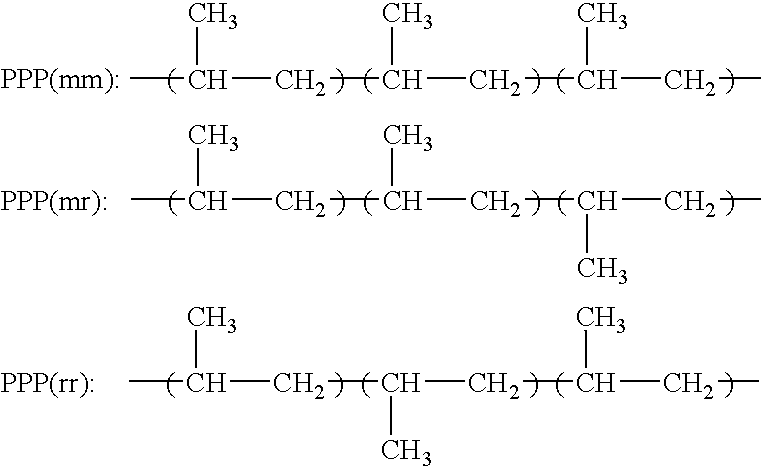Plasticized hetero-phase polyolefin blends
a polyolefin and heterophase technology, applied in the direction of pigment pastes, etc., can solve the problems of poor surface appearance, limited mfr maximum, low impact strength, etc., and achieve excellent impact toughness and processibility during fabrication. good
- Summary
- Abstract
- Description
- Claims
- Application Information
AI Technical Summary
Benefits of technology
Problems solved by technology
Method used
Image
Examples
examples
[0637]The present invention, while not meant to be limited by, may be better understood by reference to the following examples and tables.
[0638]Blend components used to prepare the Example Blends are reported in Table 1; compositions of Example (E) and Comparative (C) blends are reported in Tables 2a and 2b; evaluation results for Example (E) and Comparative (C) blends are reported in Tables 3a and 3b.
[0639]Blends were prepared by melt-mixing all components on a ZSK-30 twin-screw extruder (30 mm diameter) with underwater pelletizer, using loss-in-weight feeders for adding components through the extruder feed-throat. Example blends were prepared by melt-mixing a masterbatch composition with other components to yield the final composition, again using the ZSK-30 twin-screw extruder and feed-throat addition of all components except wollastonite, which was added using a side feeder. Two masterbatch (MB) compositions were prepared on a ZSK-25 twin-screw extruder (25 mm diameter, 44 L / D, ...
PUM
| Property | Measurement | Unit |
|---|---|---|
| melt flow rate | aaaaa | aaaaa |
| flexural modulus | aaaaa | aaaaa |
| notched Charpy impact strength | aaaaa | aaaaa |
Abstract
Description
Claims
Application Information
 Login to View More
Login to View More - R&D
- Intellectual Property
- Life Sciences
- Materials
- Tech Scout
- Unparalleled Data Quality
- Higher Quality Content
- 60% Fewer Hallucinations
Browse by: Latest US Patents, China's latest patents, Technical Efficacy Thesaurus, Application Domain, Technology Topic, Popular Technical Reports.
© 2025 PatSnap. All rights reserved.Legal|Privacy policy|Modern Slavery Act Transparency Statement|Sitemap|About US| Contact US: help@patsnap.com



